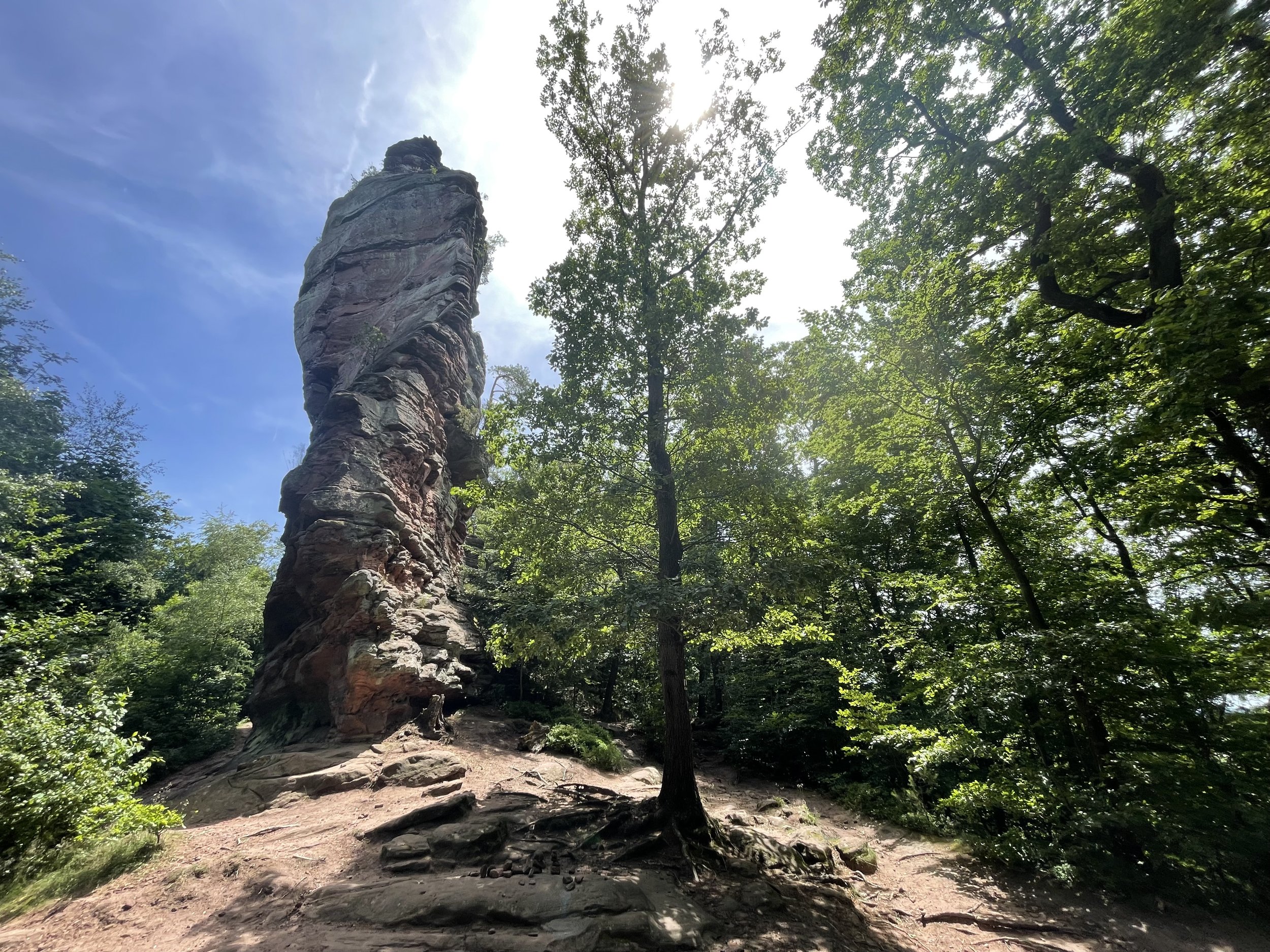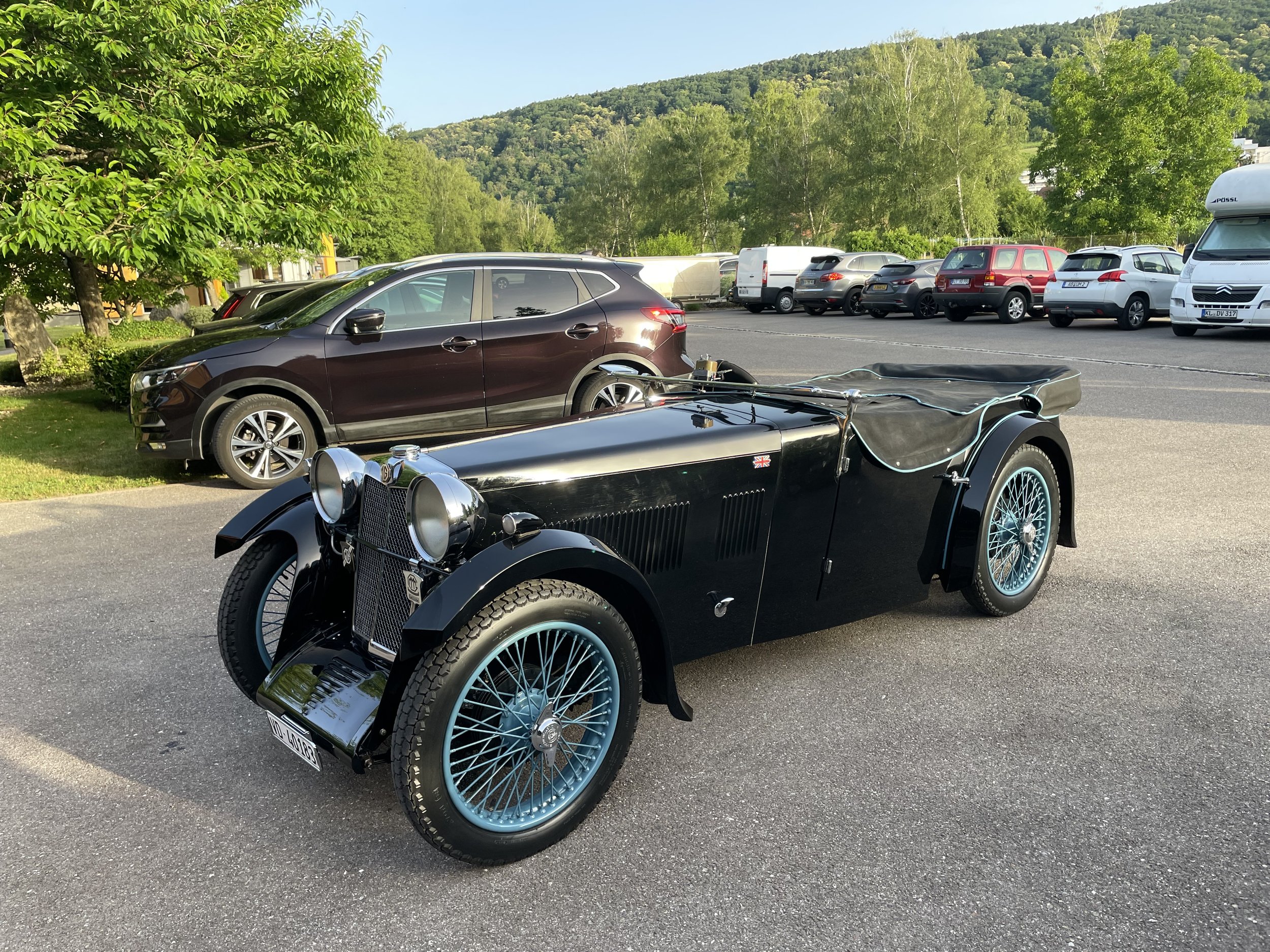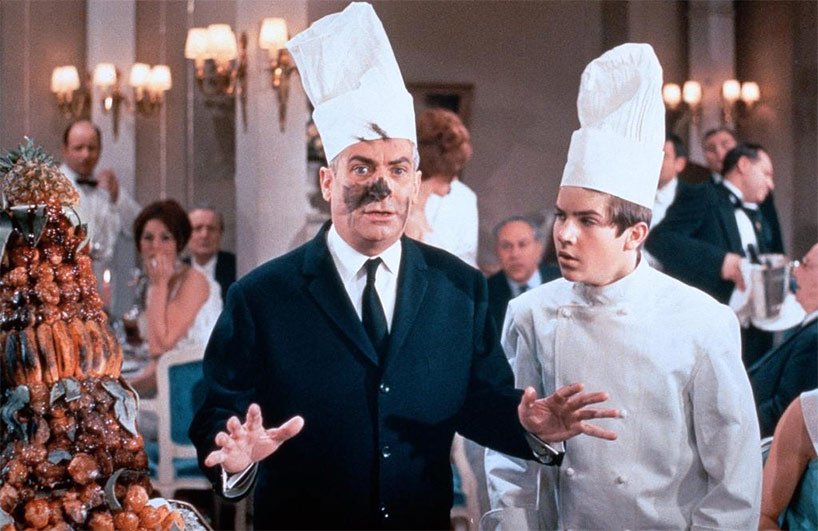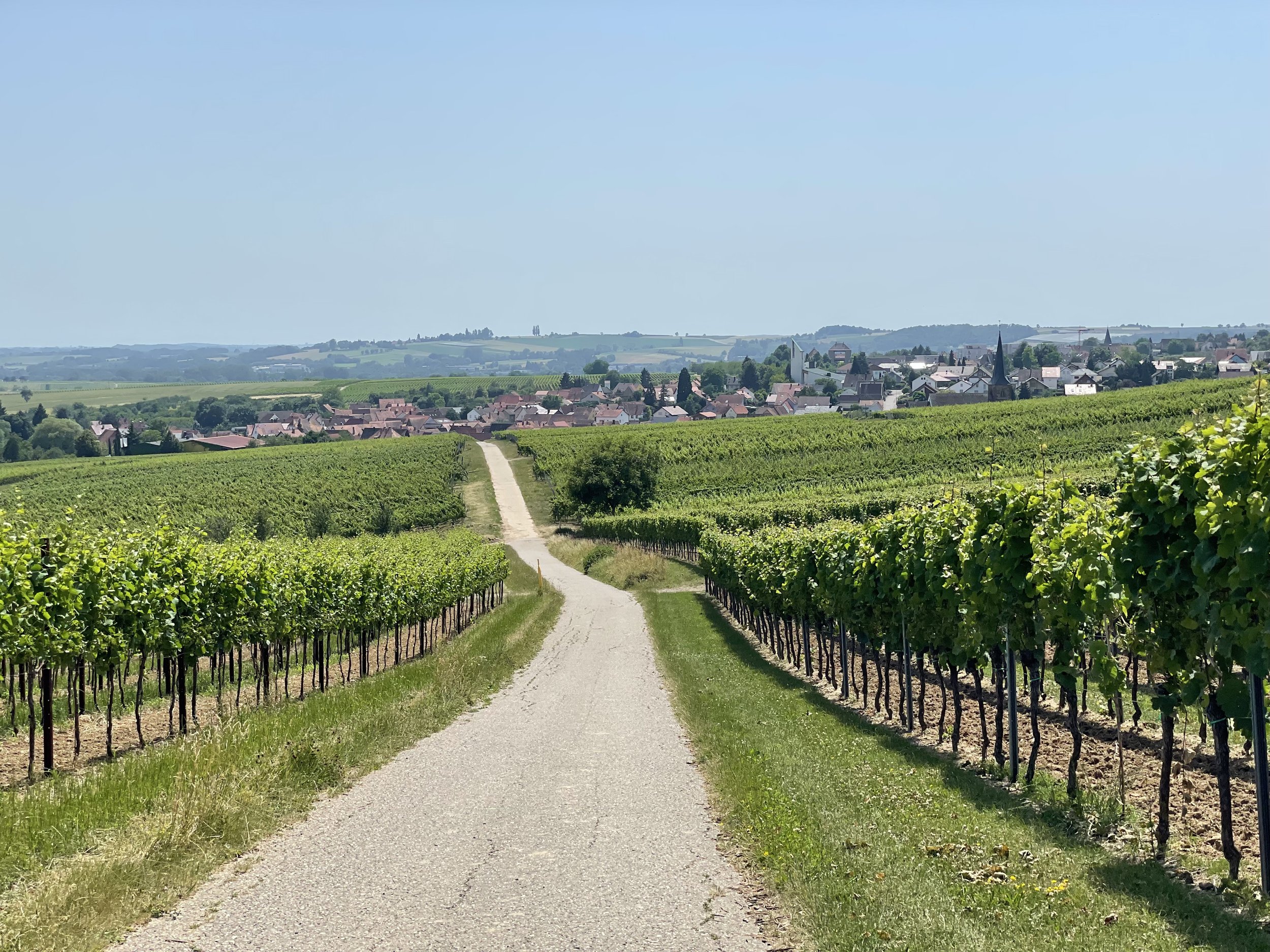Le bon goût de la famille Acker
Artitec, the company I am working for, was invited by Gabriel Acker, the publisher of the magazine Le Train, to Wissembourg in France, just 2 kilometres from the German-French border, for the Le Rail d’Or 2022 award ceremony.
The award ceremony was held in the winery Cleebourg. Before the ceremony we drank crémant. Our company won two first prices in two categories. In the evening there was diner in restaurant Moulin de la Walk.
I left home early enough to have time for hiking on Friday in the Südpfalz around Annweiler am Trifels. The Reichsburg Trifels towers high above the town. From the early 14th century the castle was in decline. The current form is the result of a restaurantion project which began in 1841 when Annweiler was part of Königreich Bayern (1806–1918).
France was suffering under a dangerous heatwave that weekend. The worst temperatures were in the south of France but even in Wissembourg the thermometer hit 35 degrees Celsius (95 °F).
The city of Wissembourg originated around the Weissenburg Abbey, which became an important abbey by acquiring fertile agricultural land and investing the proceeds in saltworks. But when the direct management of the fields by the monastery transitioned into a (then modern) feudal system, the estates gradually vanished and the abbey lost power. The current St. Peter and St. Paul's Church was largely built in the late 13th century.
On Friday we ate Flammenkuchen under the tower of the church in restaurant L' Abbaye and I tasted the best frog legs ever. I plan to cook the recipe at home. Especially the garlic has to be perfectly cooked. I am quite sure they fried the garlic separately just like you would do when making Thai garlic fish.
Cuisses de grenouille au beurre aillé et persillé
Salez et poivrez les cuisses de grenouille puis roulez-les dans la farine. Faites-les revenir dans l'huile chaude pendant 5 minutes. Faites fondre le beurre, retirez du feu et ajoutez l'ail et le persil haché. Laissez infuser à couvert quelques minutes. Versez les cuisses de grenouille dans le beurre persillé, couvrez et laissez reposer 2 minutes. Servez sur des assiettes préchauffées.
The Swiss owner of Fulgurex, Dani Ingold, brought one of his classic MG cars. This looks very much like a 1933 MG J-type. Stunning car and stories to match. One time during the Historic Grand Prix of Monaco Dani collided with a Bugatti in the tunnel. Instead of waiting for the towing truck, both drivers calmly walked into the Monte Carlo Casino and ordered a beer.
After the award ceremony we headed to the wine cellar for a wine tasting. I bought a few bottles and probably ‘‘cooked’’ my wine the next day when I left the wine in my car while hiking.
Filling the glasses with Crémant d’ Alsace in the winery Cleeburg.
Hôtel Restaurant Moulin de la Walk
I have to hand it to the French. In France gastronomy is more than just diner. In 2010 Le repas gastronomique des Français was inscribed in UNESCO's cultural heritage. Eric and Isabelle Schmidt are third generation patrons of Moulin de la Walk. The first course consisted of a perfect pairing of a 2017 Gewürtztraminer with foie gras (oie et canard). I had my glass filled twice. The sour notes were provided by a compotée rhubarbe. Just perfect!
The second course was equally perfect. The wine was provided by Domaine Louis Cheze, if I’m correct the Sixtus 2020 Côtes du Rhône blanc is made of viognier grapes.
I couldn’t finish the glass of red wine which accompanied the pork. Since the late afternoon I drank eight glasses of wine, which was way more than I am used to.
Duo de foie gras maison (oie et canard aux fruits sec). Gel fraise, compotée rhubarbe.
Vin: Gewürtztraminer Verdangen tardives 2017.
Filet de dorade rôti. Pointes d’asperges, sauce beurre blanc.
Vin: Sixtus 2020 Côtes du Rhône blanc.
Véritable pluma de porc ibérique. Poêlée de légumes d’été. Pommes de terre rissolées.
Vin: Saint Joseph Cuvée Ro-Rée. Domaine Louis CHEZE.
Below: Délice fraises-citron, biscuit pistache.
Eric and Isabelle Schmidt
Deutsches Weintor
In the time of Nationalsozialismus the Pfalz as a wine growing area was in trouble. An abundant harvest in 1934 in combination with a Berufsverbot for Jewish wine merchants, caused a price crash. To draw visitors to the Pfalz the rulers created the Deutsche Weinstraße under the openings title “Kampf und Volk – Wein und Wahrheit“. In 1936 the stone gate was built in just two months. The swastika under the eagle is still visible. The gate can be seen from France. The border is just 750 meters from the gate.
After leaving my hotel at 10 am I planned to hike part of the Deutsche Weinstraße starting at the gate. The hike was pleasant while in the forest. To get back to my car in time I took a short cut on the way back through the vineyards. With 35 degrees Celsius and no shade I barely escaped a heat stroke. I had to sit down with a large bottle of cold mineral water for 45 minutes before I was well enough to drive.
No shade and 35 degrees. In the distance the Deutsche Weintor.














